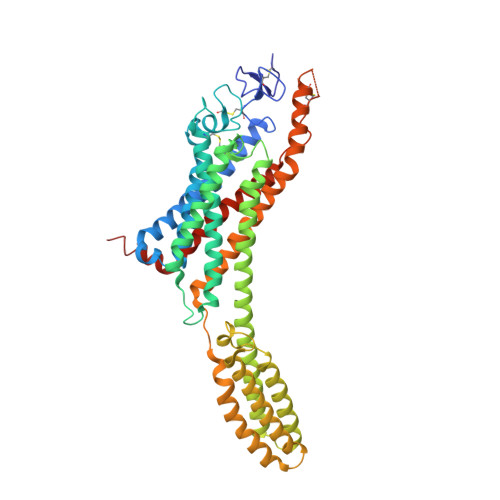Structural basis for Smoothened receptor modulation and chemoresistance to anticancer drugs.
Wang, C., Wu, H., Evron, T., Vardy, E., Han, G.W., Huang, X.P., Hufeisen, S.J., Mangano, T.J., Urban, D.J., Katritch, V., Cherezov, V., Caron, M.G., Roth, B.L., Stevens, R.C.(2014) Nat Commun 5: 4355-4355
- PubMed: 25008467
- DOI: https://doi.org/10.1038/ncomms5355
- Primary Citation of Related Structures:
4N4W, 4QIM, 4QIN - PubMed Abstract:
The Smoothened receptor (SMO) mediates signal transduction in the hedgehog pathway, which is implicated in normal development and carcinogenesis. SMO antagonists can suppress the growth of some tumours; however, mutations at SMO have been found to abolish their antitumour effects, a phenomenon known as chemoresistance. Here we report three crystal structures of human SMO bound to the antagonists SANT1 and Anta XV, and the agonist, SAG1.5, at 2.6-2.8 Å resolution. The long and narrow cavity in the transmembrane domain of SMO harbours multiple ligand binding sites, where SANT1 binds at a deeper site as compared with other ligands. Distinct interactions at D473(6.54f) elucidated the structural basis for the differential effects of chemoresistance mutations on SMO antagonists. The agonist SAG1.5 induces a conformational rearrangement of the binding pocket residues, which could contribute to SMO activation. Collectively, these studies reveal the structural basis for the modulation of SMO by small molecules.
Organizational Affiliation:
Department of Integrative Structural and Computational Biology, The Scripps Research Institute, 10550 North Torrey Pines Road, La Jolla, California 92037, USA.















